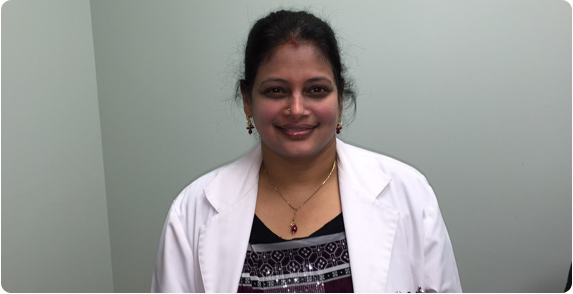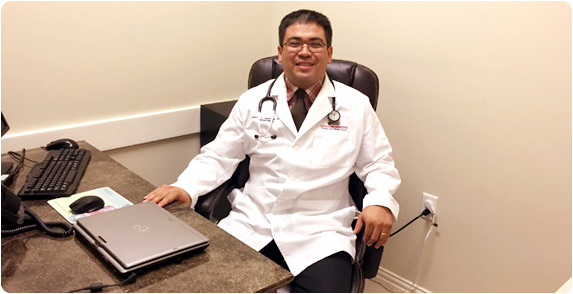What is attention deficit hyperactivity disorder (ADHD)?
ADHD refers to a chronic disorder that initially manifests in childhood and is characterized by hyperactivity, impulsivity, and/or inattention. Not all of those affected by ADHD manifest all three behavioral categories. These symptoms can lead to difficulty in academic, emotional, and social functioning. The diagnosis is established by satisfying specific criteria and may be associated with other neurological, significant behavioral, and/or developmental/learning disabilities. Therapy may consider the use of medication, behavioral therapy, and adjustments in day-to-day lifestyle activities.
Studies in the United States indicates approximately 8%-10% of children satisfy diagnostic criteria for ADHD. ADHD is, therefore, one of the most common disorders of childhood. ADHD occurs two to four times more commonly in boys than girls (male to female ratio 4:1 for the predominantly hyperactive type vs. 2:1 for the predominantly inattentive type). While previously believed to be "outgrown" by adulthood, current opinion indicates that many children will continue throughout life with symptoms that may affect both occupational and social functioning.
What is the cause of ADHD?
The cause of ADHD has not been fully defined. One theory springs from observations regarding variation in functional brain imagining studies between those with and without symptoms. Similar variations have been shown in studies of the structure of the brain of affected and non-affected individuals. Animal studies have demonstrated differences in the chemistry of brain transmitters involved with judgment, impulse control, alertness, planning, and mental flexibility.
What are the symptoms of ADHD?The diagnostic criteria for ADHD are outlined in the Diagnostic and Statistical Manual of Mental Health, 4th ed. (DSM-IV). All of the symptoms of inattention, hyperactivity, and impulsivity must have persisted for at least six months to a degree that is maladaptive and inconsistent with the developmental level of the child.
Inattention:
- The child often fails to give close attention to details or makes careless mistakes in schoolwork, work, or other activities.
- The child often has difficulty sustaining attention in tasks or play activities.
- The child often does not seem to listen when spoken to directly.
- The child often does not follow through on instructions and fails to finish schoolwork, chores, or duties in the workplace (not due to oppositional behavior or failure to understand instructions).
- The child often has difficulty organizing tasks and activities.
- The child often avoids, dislikes, or is reluctant to engage in tasks that require sustained mental effort (such as schoolwork or homework).
- The child often loses things necessary for tasks or activities (for example, toys, school assignments, pencils, books, or tools).
- The child is often easily distracted by extraneous stimuli.
- The child is often forgetful in daily activities.
Hyperactivity:
- The child often fidgets with his/her hands or feet or squirms in his/her seat.
- The child often leaves his/her seat in the classroom or in other situations in which remaining seated is expected.
- The child often runs about or climbs excessively in situations in which it is inappropriate.
- The child often has difficulty playing or engaging in leisure activities quietly.
- The child often talks excessively.
Impulsivity:
- The child often blurts out answers before questions have been completed.
- The child often has difficulty awaiting his/her turn.
- The child often interrupts or intrudes on others (for example, butts into conversations or games).
In addition, some hyperactive, impulsive, or inattention symptoms that cause present difficulties were present before 7 years of age and are present in two or more settings (at school [or work] or at home). There must be clear evidence of significant impairment in social, academic, or occupational functioning. And the symptoms are not entirely caused by another severe physical disorder (for example, severe illness associated with chronic pain) or mental disorder (for example, schizophrenia, other psychotic disorders, severe disabling mood disorders, etc.).
Inattention symptoms are most likely to manifest about at 8 to 9 years of age and commonly are lifelong. The "delay" in onset of inattentive symptoms may reflect its more subtle nature (vs. hyperactivity) and/or variability in the maturation of cognitive development. Hyperactivity symptoms are usually obvious by 5 years of age and peak in severity between 7 to 8 years of age. With maturation, these behaviors progressively decline and often have been "outgrown" by adolescence. Impulsive behaviors are commonly linked to hyperactivity and also peak about 7 to 8 years of age; however, unlike their hyperactive counterpart, impulsivity issues remain well into adulthood. Impulsive adolescents are more likely to experiment with high-risk behaviors (drugs, sexual, driving, etc). Impulsive adults have a higher rate of financial mismanagement (impulse buying, gambling, etc.)
How is ADHD diagnosed?
The evaluation of a child suspected of having ADHD involves many disciplines to include comprehensive medical, developmental, educational, and psychosocial evaluations. Interviewing parents and the child along with contact with the child's teacher(s) is crucial. Investigation regarding the family history for behavioral and/or social problems is helpful.
While direct person-to-person contact is considered vital at the outset of an investigation, follow-up studies may be guided by comparing standardized questionnaires (parental and teacher) completed prior to intervention and subsequent to medication, behavioral therapy, or other approaches. While there is no unique finding on physical exam in patients with ADHD, unusual physical features should prompt consideration of consultation with a geneticist due to the high association with ADHD behavioral patterns and well-recognized congenital syndromes (for example, fetal alcohol syndrome).
How are schools involved in diagnosing, assessing, and treating ADHD?
Physicians and parents should be aware that schools are federally mandated to perform an appropriate evaluation if a child is suspected of having a disability that impairs academic functioning. This policy was recently strengthened by regulations implementing the 1997 reauthorization of the Individuals with Disabilities Act (IDEA), which guarantees appropriate services and a public education to children with disabilities from ages 3 to 21. If the assessment performed by the school is inadequate or inappropriate, parents may request that an independent evaluation be conducted at the school's expense. Furthermore, some children with ADHD qualify for special-education services within the public schools, under the category of "Other Health Impaired." In these cases, the special-education teacher, school psychologist, school administrators, classroom teachers, along with parents, must assess the child's strengths and weaknesses and design an Individualized Education Program. These special-education services for children with ADHD are available though IDEA.
Despite this "federal mandate," the reality is that many school districts, because of underfunding or understaffing, are unable to perform "an appropriate evaluation" for all children suspected of having ADHD. The districts have the latitude to define the degree of "impairment of academic functioning" necessary to approve "appropriate evaluation." This usually means the children who are failing or near-failing in their academic performance. A very large segment of the ADHD-affected children will be "getting by" (not failing) academically (at least for their early years of school), but they are usually achieving well below their potential and getting more and more behind each year on the academic prerequisite skills necessary for later school success. Thereafter, further educational testing may be requested from the school district. Unfortunately, some families will have to assume the financial burden of an independent educational evaluation. These evaluations are commonly done by an educational psychologist and may involve approximately eight to 10 hours of testing and observation spread out over several sessions. A primary goal of an educational evaluation is to exclude/include the possibility of learning disorders (such as dyslexia, language disorders, etc.). |









